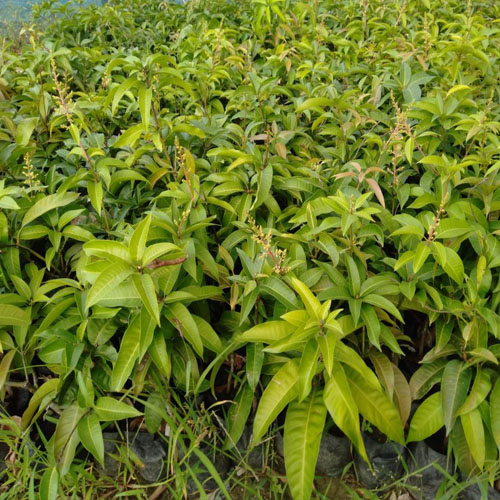Baganfhalli Mango Plants
Baganfhalli mango plants are known for their distinct characteristics and are primarily grown in specific regions. Here’s an overview of Baganfhalli mango plants:
1. Origin and Characteristics:
- Origin: Baganfhalli mangoes are a lesser-known variety of mango that is cultivated in parts of India, particularly in Karnataka and Maharashtra. The name might vary slightly depending on local dialects or regions.
- Fruit Characteristics: The mangoes are typically medium to large in size with a greenish-yellow skin when ripe. The flesh is often sweet, aromatic, and smooth, with minimal fiber. The flavor profile can vary, but it is generally well-regarded for its taste and texture.
2. Growing Conditions:
- Climate: Baganfhalli mango plants thrive in tropical and subtropical climates. They prefer warm weather and are sensitive to frost.
- Soil: These mangoes grow best in well-drained soil rich in organic matter. Sandy loam or loamy soil with a slightly acidic to neutral pH (6.0 to 7.5) is ideal.
- Watering: Regular watering is crucial, especially during the fruiting season. Mature trees are somewhat drought-tolerant but should be watered adequately to ensure good fruit quality. Avoid waterlogging to prevent root rot.
- Sunlight: Full sun exposure is essential for healthy growth and fruit production. Baganfhalli mango plants need at least 6-8 hours of direct sunlight each day.
3. Planting and Care:
- Planting: The best time to plant Baganfhalli mango trees is during the monsoon season or just before the rainy season. Prepare the planting hole to be twice as wide and deep as the root ball. Mix in organic compost to improve soil fertility.
- Spacing: Space the trees about 15 to 20 feet apart to allow for proper growth and to reduce the risk of diseases.
- Fertilization: Regular application of balanced fertilizers during the growing season is important. Organic matter like compost or well-rotted manure can also be used to enhance soil health.
- Pruning: Prune the trees to shape them, remove dead or diseased branches, and improve air circulation. Proper pruning helps in enhancing fruit quality and reducing disease risk.
4. Pests and Diseases:
- Pests: Common pests affecting Baganfhalli mango plants include mango hoppers, mealybugs, aphids, and fruit flies. Regular monitoring and appropriate pest control measures, such as organic sprays or insecticides, can help manage these issues.
- Diseases: The plants may be susceptible to diseases like anthracnose, powdery mildew, and bacterial leaf spot. Implement good cultural practices, avoid overhead watering, and use fungicides as needed to prevent and control these diseases.
5. Harvesting:
- Timing: Baganfhalli mangoes are usually harvested when they have reached full size and the skin color changes to a more vibrant hue. Harvesting times can vary depending on local climate and growing conditions.
- Method: Harvest the mangoes carefully to avoid bruising. Use a sharp knife or pruning shears to cut the fruit from the tree, leaving a small portion of the stem attached to prevent sap burn.
6. Uses:
- Consumption: Baganfhalli mangoes are enjoyed fresh due to their sweet and aromatic flavor. They are also used in a variety of culinary applications.
- Culinary Uses: They can be used in making mango-based desserts, smoothies, juices, salads, and even pickles. Their flavor makes them suitable for various recipes and culinary preparations.
With proper care and favorable growing conditions, Baganfhalli mango plants can produce high-quality mangoes that are valued for their taste and versatility.


